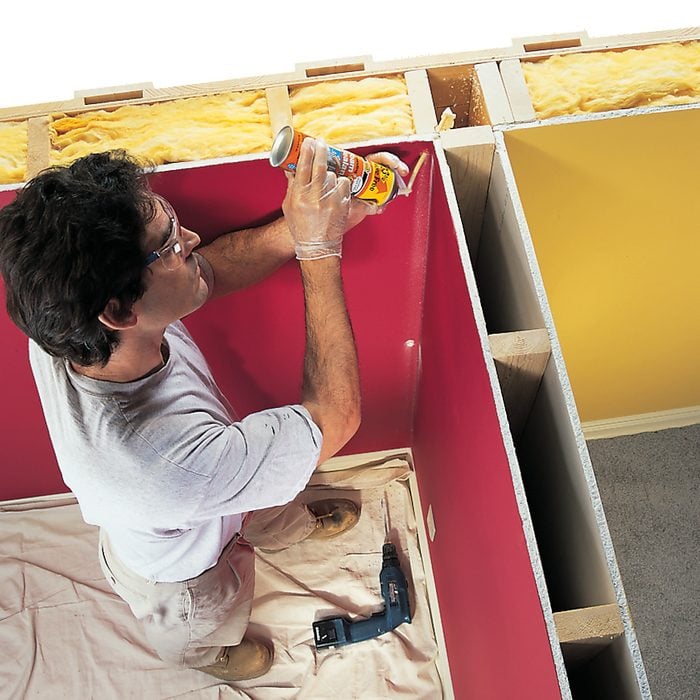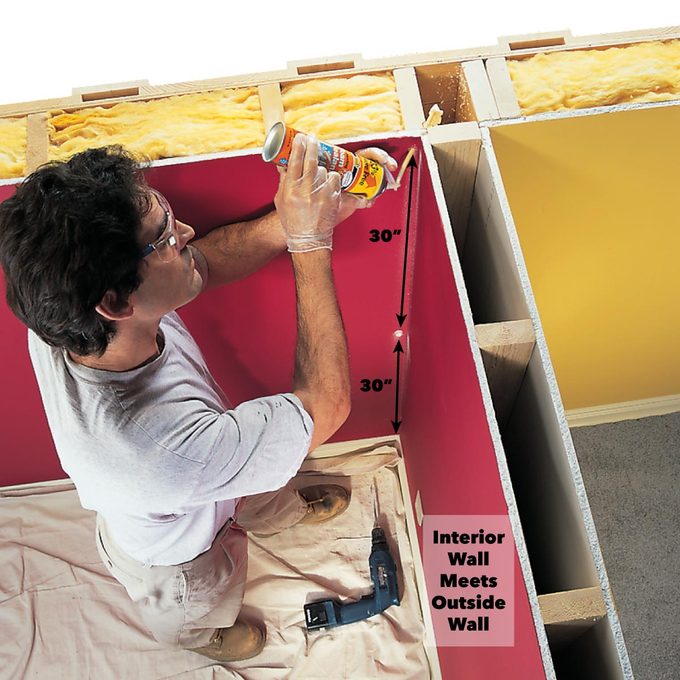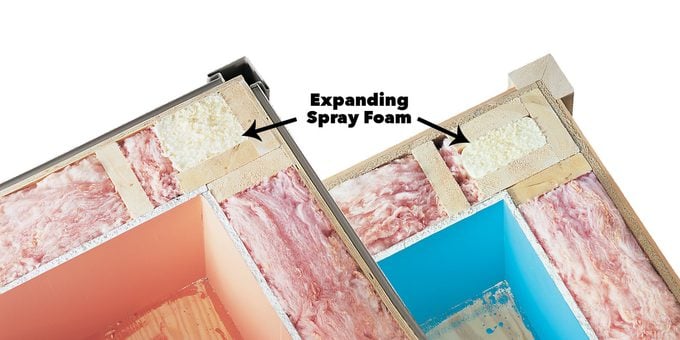Removing Mold From Walls
Updated: Mar. 10, 2022

The best solution is to find the cause.
Persistent mold on a wall near an inside corner may be due to an insulation problem in the corner framing. Here’s how to find it and fix it.
Why does mold grow in the inside corners of walls?
There are two possible causes for a mold problem at the inside corners of exterior walls. The first is poor air circulation. Warm air registers are normally located in front of windows so they can blow warm, dry air over the glass to cut down on condensation. Corners that are located away from this moving air, like those in closets, become cool and allow moisture to condense. The moisture is what mold and mildew thrive on. The second is uninsulated framing cavities. During cold weather, the inside wall surface cools, moisture condenses, and mildew sets up shop.
The Problem:

The problem could be uninsulated framing cavities at the corners or where interior walls meet exterior ones. When a house is being built, carpenters are supposed to insulate cavities that are only accessible when they’re framing the walls. Sometimes they get careless or lazy or there’s no insulation on the site and the job doesn’t get done. The insulators can’t tuck insulation in those spots later, so they never get filled. Then during cold weather, the inside wall surface cools, moisture condenses, and mildew sets up shop.
The Solution:

Here’s the fix: Use a 3/8-in. spade drill bit to bore holes at 30-in. intervals up from the floor. Angle the holes toward the middle of the corner. (If there’s already insulation in the cavity, it’ll get wrapped around the drill bit on the first hole, indicating you don’t need this fix.)
Spray a whole can of expanding foam into the first hole and let it sit overnight to finish expanding. The next day, fill the next hole with another whole can of foam and let it sit overnight. Finally, spray about half of a third can into the last hole. If the hole is plugged the next day, you’re done. If not, spray in the rest, then patch the holes and repaint.
If the corners are already insulated, try reducing the moisture in the air and/or increasing air movement. Dehumidifiers, ceiling fans, air-to-air heat exchangers and more warm air vents are a few approaches that will help.
We all know spray foam is an insulation powerhouse, but check out these 15 brilliant uses for spray foam that will blow your mind.
Required Tools for this Project
- Cordless drill
Required Materials for this Project
- Expanding foam